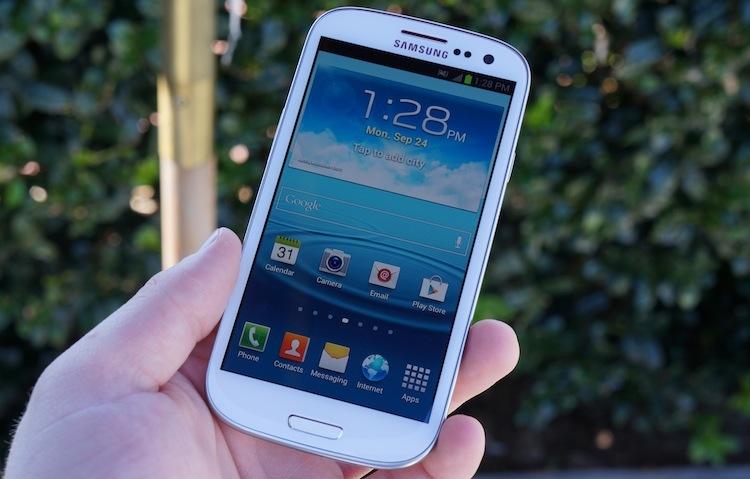
The Samsung Galaxy S III is the third installment of the ever-popular Galaxy S series by Samsung, and it is one of the most refined and balanced Android handsets we have come across here at PhoneDog. The fact that Samsung has already sold 20 million Galaxy S III units should lend credence to its quality.
With literally hundreds of Android handsets before it, the Galaxy S III boasts some of the best specifications in any mobile handset … ever, such as a 4.8-inch HD Super AMOLED display, 2GB RAM and a 1.5GHz dual-core Snapdragon S4 chipset. Unlike most Android handsets, though, Samsung released the Galaxy S III on all four major U.S. carriers (and is slowly seeding them to regional carriers). You can purchase virtually the exact same Galaxy S III (with the exception of wireless bands, of course) through AT&T, Verizon, Sprint and T-Mobile starting at $199 with a two-year agreement.
However, is the Samsung Galaxy S III the phone to buy? How does it stack up to the competition, like the iPhone 5 or HTC One X? I have spent some time with the Samsung Galaxy S III and here is what I've learned …
Designed by humans and inspired by nature, the Samsung Galaxy S III is a unique twist on what could have been just your run-of-the-mill phone. The Hyperglaze coating on the device comes in trendy colors like Pebble Blue, Marble White or Garnet Red, depending on your carrier. And there's a chance more colors will make an appearance in due time, as we caught a glimpse of Sapphire Black, Amber Brown and Titanium Gray at IFA.
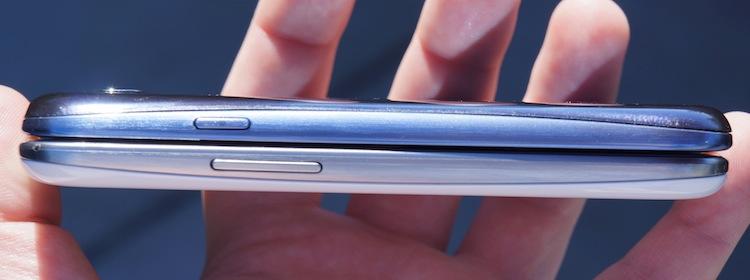
The device has a very glossy, smooth finish. Made mostly of plastic, it is very lightweight, and at just 8.6mm thick, it feels comfortable in the hand despite its arguably large, 4.8-inch display.
At the bottom of the face, you will find an unusual combination (at least for stateside devices) of three navigational buttons – Menu, Home and Back. Menu and Back are capacitive buttons and Home is a long and narrow physical button. Above these buttons, the 4.8-inch HD Super AMOLED (1,280 by 720 pixels) display will be found, followed by some Samsung branding, a speaker grill, light sensor and a front-facing camera. To the left of the speaker grill is a hidden (but very bright) LED notifier. Along the left edge you will find a volume rocker near the top edge, and along the upper right edge is the power button. A microphone and 3.5mm headphone jack is up top, and the micro USB charging port and another microphone are on the very bottom of the device. On the back is more branding, LED flash, an 8-megapixel camera and a loud speaker. Beneath the battery door, is a 2,100mAh battery and micro SD card slot. (Depending on the carrier, there may also be a micro SIM card slot to the right of the micro SD slot.)
Overall, the device itself feels very comfortable and solid in the hand. And I have to note that the button configuration is similar to the Samsung Galaxy Nexus, which I have commended several times in the past. Unlike previous Samsung Galaxy S models, which were also heavily laden in plastic, the Galaxy S III does not squeak or creak under a firm grip. That said, the plastic tends to take away from the high-quality feel of the device, and its heavily rounded corners create a slight resemblance to much lower-quality feature phones. The one quirk of the Galaxy S III I cannot seem to shake, though, is the physical Home button. Even now, I find myself tapping it instead of pressing.
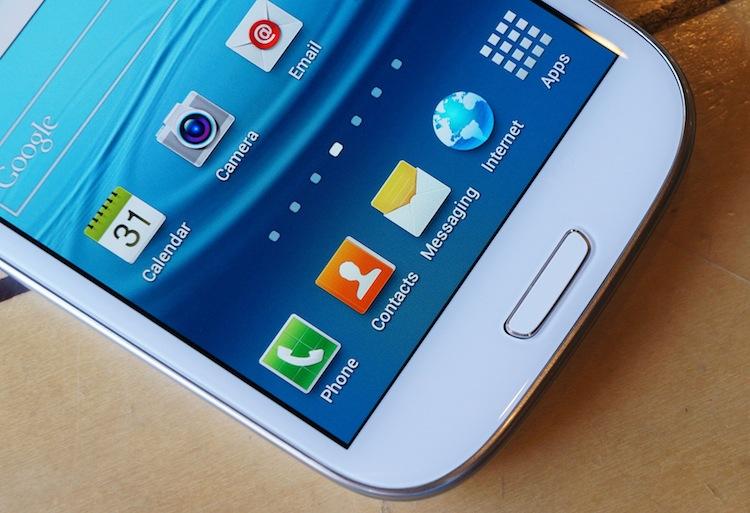
The Samsung Galaxy S III ships with Android 4.0, Ice Cream Sandwich, beneath its deep-rooted, customized software dubbed TouchWiz Nature UX. At first glance, the software on the Galaxy S III is strikingly similar to previous versions of TouchWiz. That said, it takes various cues from nature, like water droplet sounds for interactions with the software – unlocking the smartphone makes a water ripple sound, tapping interface elements makes a water droplet sound – and a handful of nature-centric wallpapers.
The software itself is chock-full of features you won't find on any other Android device – or any other smartphone, for that matter – like Smart Stay, which keeps the display lit if the front-facing camera detects the user is reading, or S Voice, a voice-powered personal assistant application not unlike Siri. But the value proposition of TouchWiz doesn't end there. S Beam, built on the existing Android Beam software, allows two Galaxy S III users to share pictures and other media between two smartphones using NFC and an ad hoc connection between the devices. There is also a horde of motion and gesture controls embedded deep within the software. To zoom within a Browser page or on a photo, place two fingers on the display and tilt the device toward you. To take a screen shot, you can either press and hold Home and the power button simultaneously, or, if you only have one free hand, simply swipe your palm across the display – either left-to-right or vice versa.
All throughout the TouchWiz Nature UX software, you will find additional features that are absent in other versions of Android, even the stock version. For example, quick access to toggle settings – Wi-Fi, Bluetooth, Mute, orientation, screen brightness, etc. – can be accessed right in the notification shade. In that right, Samsung has added tons of value to their line of smartphones solely on a software basis. But such deep customizations can lead to unforeseen problems: software update turnaround times are increased, bugs and other glitches inevitably find their way into the system and Samsung-specific features may override more well-rounded offerings that come straight from Google, like tight Google Voice integration with stock Android.
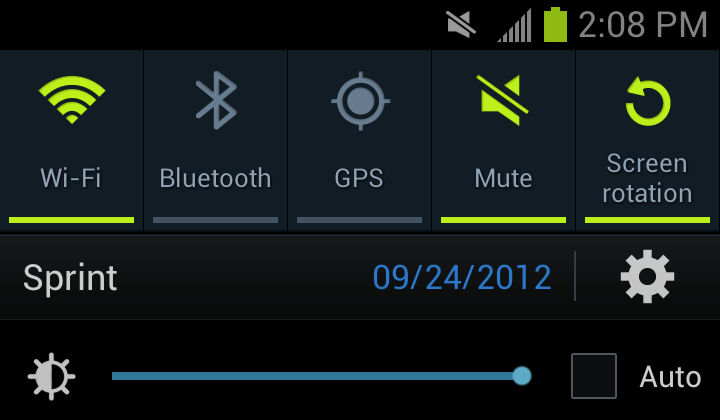
In my time with the Galaxy S III, the software has been solid and mostly bug-free. That said, I have had a few run-ins with glitches. Immediately after setting the device up the first time, the phone froze for approximately four minutes before resetting itself. I have also experienced a couple instances of noticeable lag when just switching back and forth between several (admittedly busy) Web pages and other applications like LastPass and Dropbox. It wasn't as bad as, say, the lag on the Samsung Galaxy Note, which uses a Snapdragon S3 chip; it was more like a quick hiccup before the processor ramped up. The update to Jelly Bean, which is expected over the next few months, should nix most lag or latency issues, thanks to Project Butter.
While we're on the topic of lag, under the hood, the Galaxy S III is powered by the popular Snapdragon S4 chipset, which houses a 1.5Ghz dual-core Krait processor and Adreno 225 GPU. This is a stark contrast to the international version of the S III, which touts the Samsung-made, 1.4GHz quad-core Exynos chip. In normal use, the S4 chip tends to outperform much of the competition due to it being built on a 28nm process. I have been using a HTC One X since May. Even today, I experience minimal lag on the One X, which leads me to believe much of the issue with the Galaxy S III is on the software side, not hardware limitations.
With the exception of the T-Mobile variant, the Galaxy S III comes with LTE connectivity. T-Mobile offers acceptable speeds with its HSPA+ network instead. I have spent some hands-on time with the AT&T variant and on the northern tip of the Charlotte Metro area managed to hit some questionably awesome speeds, 44.18Mbps down and 12.48Mbps up. Aaron's more extensive testing yielded more normal speeds of roughly 20Mbps down and 5Mbps to 11Mbps up. On the Verizon model, he shared results that ranged from 4Mbps to 15Mbps down and 5Mbps to 9Mbps up. Of course, LTE speeds and coverage will vary depending on your location and network of choice.
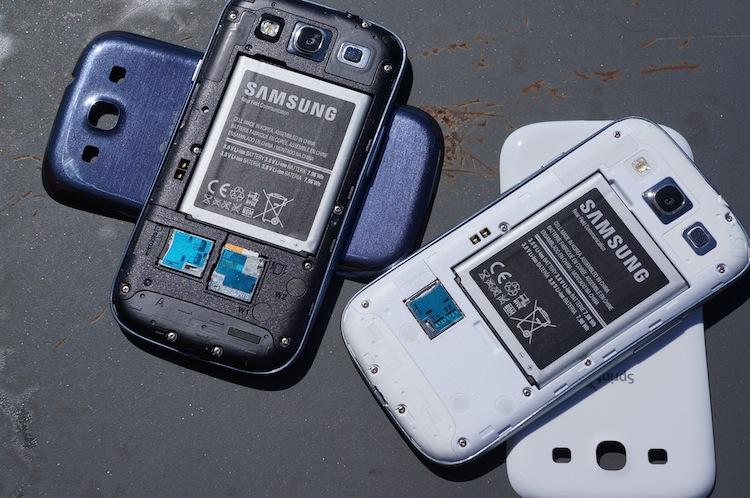
While I'm not one to make a lot of calls, I did dig around in the Phone app for a while. Sitting in a coffee shop with an grinder running in the background, I placed a call. The earpiece speaker is crisp and loud. I had some trouble hearing a caller over speaker phone, which was quite tinny, but the ear speaker is plenty loud. And if you need an extra boost of volume for those really loud areas, enabling the Extra Volume feature should do the trick. The microphone is quite sensitive, too, but the background noise cancellation did its job. The recipient reported no problems hearing me, even in a busy coffee shop and music in the background.
A growing concern as of late is storage capacity. More specifically, limitations due to low storage capacity. Higher display resolutions warrant updated graphics which, in turn, take up more storage space. However, most modern phones tout little more memory that their predecessors of years past. The HTC One X and iPhone 5 come with fixed storage, although the iPhone 5 comes in various, fixed capacities and (depending on your market) the HTC One X does, too. The Samsung Galaxy S III, however, comes with either 16GB or 32GB with expandable storage space via micro SD slot. The ability to double – or triple – your storage space on the fly, I have learned, is an irreplaceable luxury.
When it comes to smartphone cameras, I am very particular. As the old saying goes, "The best camera is the one you have with you." As true as that may be, if a camera can't capture the moment accurately without issue, it is not the best camera to have with you. Fortunately, the Galaxy S III fares quite well against the competition. Over the weekend, I tested it against the HTC One X and iPhone 5 in various conditions. In low-light, no camera is going to blow you away. But the Galaxy S III managed to capture more light than I expected, despite its f/2.6 aperture. The One X has a similar night mode, but its f/2.0 aperture helps capture more light. (What it does with that light is a different story.) The iPhone 5 also works surprisingly well in low light, although it doesn't seem to capture quite as much light. In better lighting, however, the differences came out of the woodwork. Where the One X captured a milky image of a Rubik's Cube on my desk, the Galaxy S III and iPhone 5 were neck and neck. Colors from the S III tend to pop more and it captured more light than the iPhone 5, though the iPhone 5 produced a more true-to-life image. The point being, the Galaxy S III camera is more than sufficient for most smartphone camera needs.
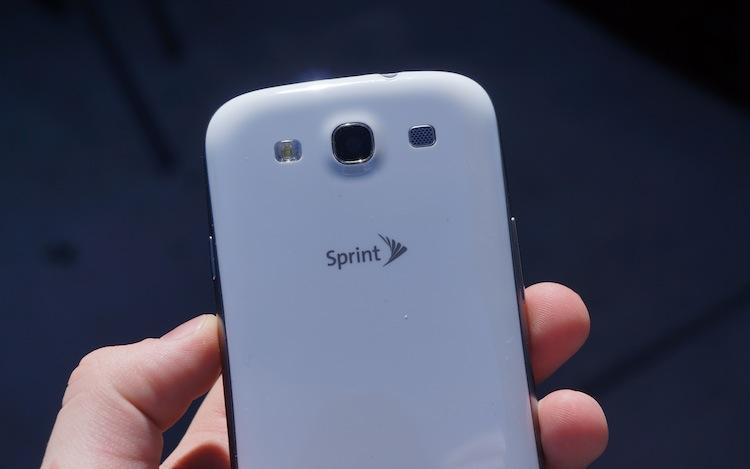
The meat of the Galaxy S III camera, however, is the accompanying software. The S III touts features such as zero-shutter lag, burst mode, HDR, panorama and Smile shot, and there's a bevy of other features buried within the Camera app. It also records video in full 1080p HD at 30 frames per second. Video capture is crisp and detailed, although like its stills, it tends to over-saturate colors. Audio is par, too, though the playback on the loud speaker around back will initially sound tinny.
To the dismay of many users, Samsung continued to use a HD Super AMOLED display, which uses a PenTile Matrix subpixel layout. With so much backlash, why do they keep using the PenTile panels, exactly? Samsung's Philip Berne explained to MobileBurn that Samsung sticks with a RGBG PenTile subpixel layout to stave the deterioration of the quality of the display. The downside to that is how nasty whites can turn out. After using the Galaxy Nexus and Galaxy Note, both of which also use HD Super AMOLED panels with PenTile, I was skeptical of how the S III display would stack up. After some time with it, though, it's clear Samsung has focused on improving the overall quality of their PenTile AMOLED panels.
At 4.8-inches and 1,280 by 720 pixels, the Samsung Galaxy S III actually has a lower pixel density than both the HTC One X and iPhone 5. The difference is noticeable, but barely so to the naked eye. Beside the new 4-inch Retina Display of the iPhone 5 and the much-loved 4.7-inch S-LCD2 display on the HTC One X, the 4.8-incher on the Galaxy S III fares surprisingly well. Whites still tend resemble fabric when at low brightness, but this is a finite detail most people will overlook. Images are still very crisp and sharp. Colors are super saturated in typical AMOLED fashion, but many view this as a feature more than a drawback. It gives colors a nice pop and accentuates TouchWiz Nature UX perfectly.
The 2,100mAh interchangeable battery should carry most users through an entire day on moderate use. The unit I now have isn't activated anymore, so it's difficult to judge how the device will perform when connected to a wireless network, and I don't have any actual figures to go by on a personal account. However, Aaron explained in his array of video reviews that the battery life of the LTE-bearing U.S. variants of the Galaxy S III was above par. The nugget that Samsung is holding on to, though, is interchangeable batteries. While competitors like HTC and Motorola are shifting towards inbuilt batteries, not unlike Apple and the iPhone, Samsung is sticking with removable batteries, which is particularly nice for those who prefer to carry spare batteries around.
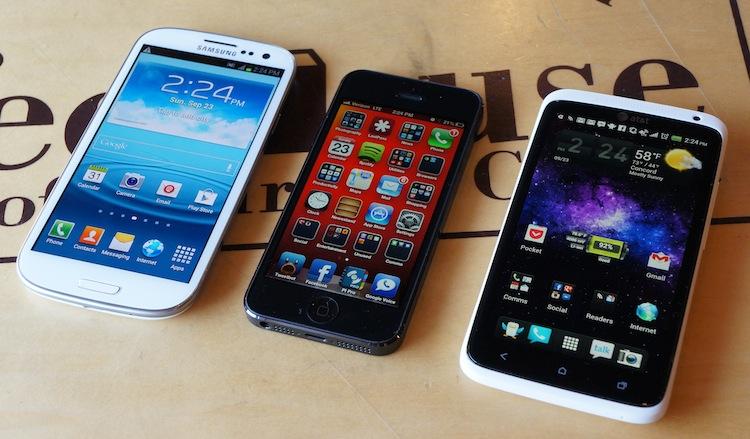
There is no questioning the quality of the Galaxy S III. Top to bottom, it is a fantastic device. And while many would rather see Samsung begin to transition away from using an excess of plastic to something a little more classy and of higher quality, the S III holds it own, despite its frail-feeling frame. Still, they've greatly improved the Galaxy S III from last year's variants and have refined their flagship, in almost every way, to create a truly stellar handset.
The 4.8-inch HD Super AMOLED panel may not be the most dense of any smartphone display, but it is bright and full of color. The camera is also a surprising high point, as well as LTE speeds (depending on carrier and location). Battery life has proven to be on par with the competition, but with the ability to remove the battery, there is an additional bit that speaks straight to the hearts of some folks.
The fact that the Samsung Galaxy S III dominated the People's Choice Chart and Mobile Tech Expert's Chart in our Official Smartphone Rankings™ for two months (only to be bested by Apple's iPhone 5 last week) should serve a testament to the caliber device Samsung created. Starting at $199 on all four major nationwide carriers, the Samsung Galaxy S III is an excellent choice for your next phone, whether you're a smartphone newcomer or long-time power user.
What's Good: Bright, vibrant 4.8-inch display; powerful 1.5GHz dual-core Snapdragon S4 chipset; LTE (on AT&T, Sprint or Verizon); ample RAM and storage options; fairly priced.
What's Bad: Some may find the physical Home button a bit odd on an Android smartphone; infrequent but noticeable spurts of lag; inbuilt micro SIM card on CDMA models.
The Verdict: The Samsung Galaxy S III is unquestionably one of the most well-rounded smartphones on the market. The additional features of TouchWiz Nature UX as well as monster specifications makes Samsung's flagship a solid device for newbies or veterans alike. For $199, there are few options worth considering over the Galaxy S III.